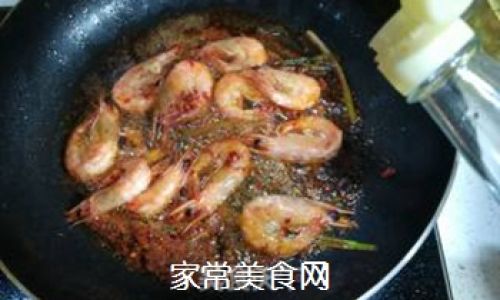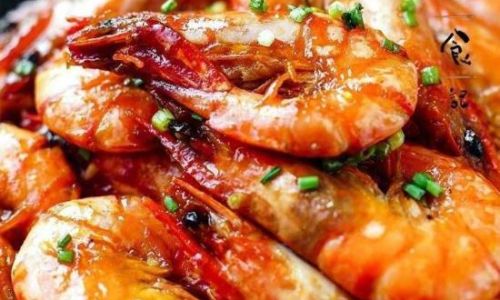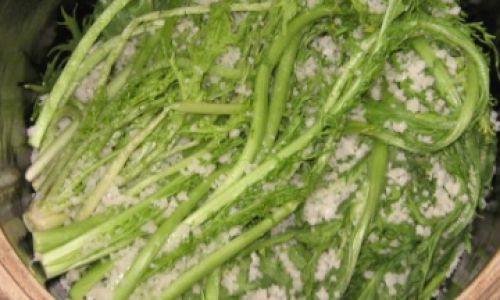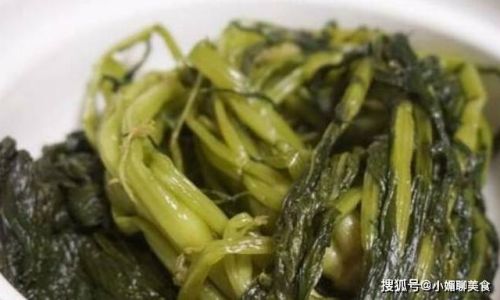Introduction
In the vast realm of culinary delights, few dishes capture the essence of both simplicity and sophistication quite like braised prawns in oil, a timeless recipe that has delighted palates across generations. This dish, often referred to as “You Men Da Xia” in its native Chinese context, embodies a perfect blend of flavors, textures, and aromas, making it a staple in many households and restaurants alike. Whether you’re a seasoned chef or an enthusiastic home cook, mastering the art of braising prawns in oil can elevate your culinary repertoire to new heights. In this article, we’ll delve into the intricacies of preparing this exquisite dish, from selecting the freshest ingredients to perfecting the cooking technique, ensuring every bite is a mouthwatering experience.

The Art of Ingredient Selection
Before diving into the cooking process, it’s crucial to understand the importance of ingredient selection. The quality of your prawns will significantly impact the final dish, so choose them wisely. Look for large, firm prawns with a vibrant color and a fresh, slightly sweet scent. Ideally, opt for wild-caught prawns as they tend to have a more robust flavor and firmer texture compared to farm-raised ones. Freshness is key; avoid prawns that have a strong fishy odor or appear dull in color.
In addition to the prawns, you’ll need a few essential aromatics and seasonings to create the signature braising sauce. Fresh ginger, garlic, and green onions are staples, providing a harmonious balance of flavors. Don’t overlook the power of a good-quality cooking oil; peanut oil or vegetable oil work well due to their high smoking point, which is essential for achieving that perfect golden-brown crust on the prawns.
For seasoning, a combination of soy sauce, Shaoxing wine (or dry sherry as a substitute), sugar, and a pinch of white pepper creates a sauce that is both savory and slightly sweet, with a hint of spice. Don’t forget the star anise and cloves, which add depth and complexity to the dish, making it truly memorable.
Preparing the Prawns

Once you’ve selected your ingredients, it’s time to prepare the prawns. Start by rinsing them under cold running water to remove any dirt or impurities. Then, using a sharp knife, gently cut through the shell along the back of each prawn, being careful not to cut through the flesh. This not only makes the prawns easier to eat but also allows the seasoning to penetrate deeper, enhancing flavor.
Remove the dark intestinal vein that runs along the back of each prawn. This can be done using the tip of the knife or a pair of tweezers. Pat the prawns dry with paper towels to remove any excess moisture; this is crucial for achieving a crispy exterior when braising.
The Braising Process
Now, let’s dive into the cooking process. Begin by heating a generous amount of oil in a large wok or heavy-bottomed skillet over medium-high heat. The oil should be hot enough to create a gentle shimmer but not smoking. Test the oil’s readiness by dropping a small piece of ginger into it; it should sizzle immediately.
Carefully add the prawns to the hot oil, being mindful not to overcrowd the pan. This ensures even cooking and helps create that desired golden-brown crust. Fry the prawns on one side until they turn opaque and slightly curly, then flip them over and cook the other side until equally crispy. Once done, remove the prawns from the oil and set them aside on a plate lined with paper towels to drain excess oil.

In the same wok, leave behind about two tablespoons of oil. Reduce the heat to medium and add the sliced ginger, garlic, and green onion whites (reserve the greens for garnish). Stir-fry these aromatics until fragrant, about 30 seconds to 1 minute. Add the star anise and cloves, allowing their flavors to meld into the oil.
Next, pour in the soy sauce, Shaoxing wine, and a small amount of water, just enough to cover the bottom of the wok. Stir in the sugar and white pepper, letting the mixture come to a simmer. Carefully return the fried prawns to the wok, nestling them into the fragrant sauce. Reduce the heat to low and cover the wok, allowing the prawns to braise gently for about 5-7 minutes, or until they are fully cooked and have absorbed the flavors of the sauce.
Finishing Touches
During the final minutes of braising, uncover the wok and increase the heat slightly to thicken the sauce. Give the prawns a gentle toss to ensure they are evenly coated with the glossy, flavorful gravy. Taste the sauce and adjust the seasoning if necessary, adding a pinch more sugar or soy sauce to balance the flavors.
Once the sauce has reached your desired consistency, remove the wok from heat. Transfer the braised prawns to a serving dish, garnishing with the reserved green onions for a pop of color and freshness. Serve immediately while hot, accompanied by steamed rice or your favorite side dish to soak up the delicious sauce.

Conclusion
Braising prawns in oil is not merely a cooking technique; it’s an art form that combines precision, patience, and a deep understanding of flavors. By following the steps outlined in this guide, you’ll be able to create a dish that is as visually appealing as it is tastefully satisfying. The result is a plate of prawns that are succulent, tender, and bursting with layers of flavor, making every bite a journey through a culinary landscape of rich, harmonious tastes.
Whether you’re entertaining guests or simply treating yourself to a gourmet meal at home, braised prawns in oil offer a delightful fusion of tradition and innovation, making it a dish worth celebrating. So, gather your ingredients, roll up your sleeves, and embark on a culinary adventure that promises to delight your senses and nourish your soul. Happy cooking!





0 comments